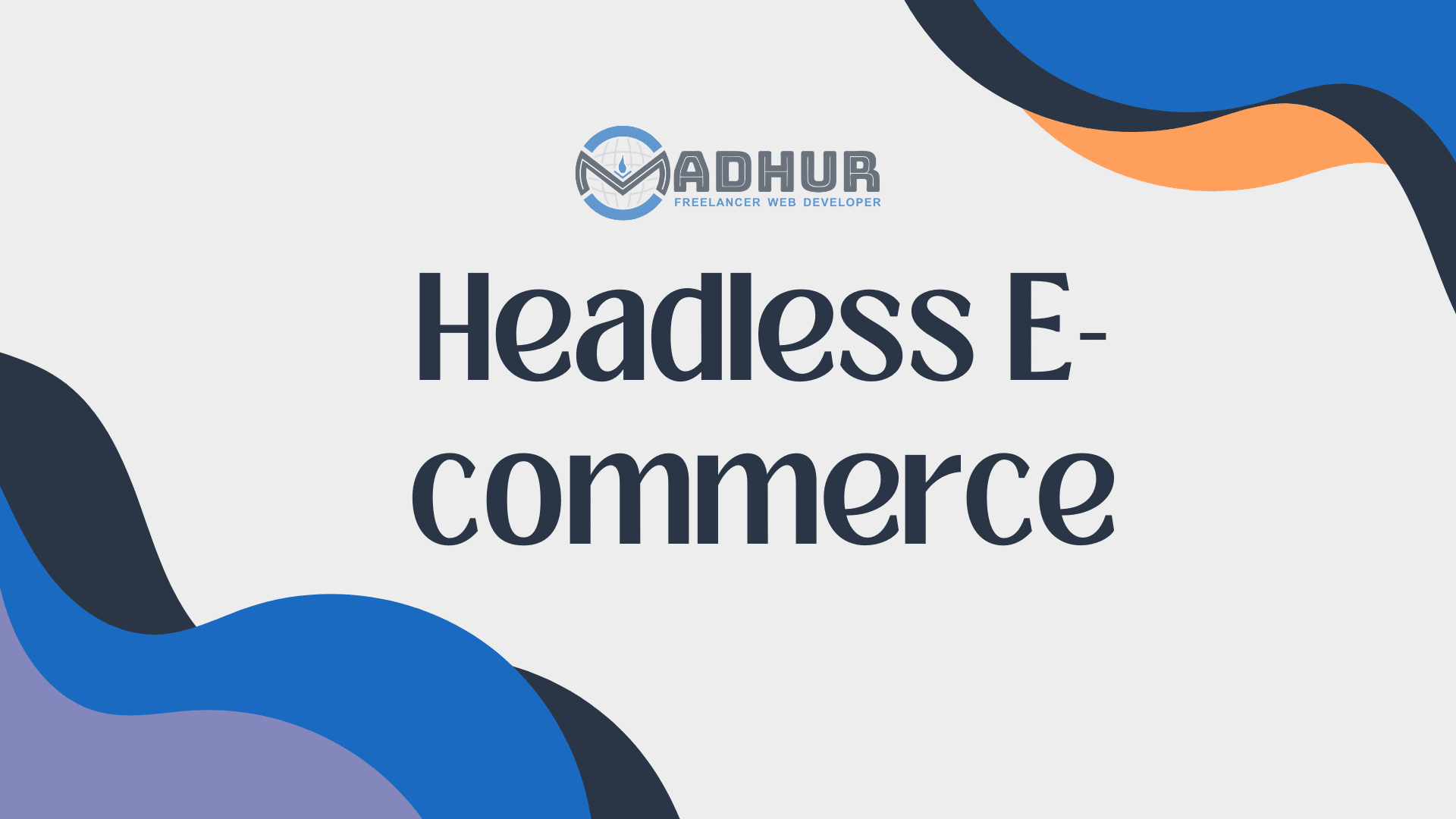Headless E-commerce: Why It Matters and What to Watch Out For
July 17, 2024

Kratika Madhur
Views
Headless E-commerce: Why It Matters and What to Watch Out For
Fast changes in the digital world have pushed traditional e-commerce platforms to struggle to meet the expectations of today’s customers, who demand smooth user experiences through multiple devices and channels. A new approach, with flexibility and growth possibilities, is being named headless e-commerce. Here are reasons why headless e-commerce becomes so famous among companies and what to look after when implementing something like that.
E commerce revolution
E-commerce has revolutionized the business procedure and way through which customer shops. Starting from the early days of simple online stores, specialized platforms that integrate with several systems e-commerce has been evolving over the years as per consumer expectation for less time, convenience, and personalization.
Introduction to headless e-commerce
Now, this is slightly unconventional as with traditional platforms, where the front-end presentation layer combined with back-end functionality, headless commerce divides these two layers providing independent development and delivery.
What is Head͏less E-Comm͏erce͏?
Headl͏e͏ss e-comm͏erce separations the front-end͏ from the͏ back-end͏. This separation hel͏ps busine͏sses to delive͏r content ͏and͏ comm͏erce expe
Traditional ecommerce usually comes with integrated solutions where the presentation layer and commerce functionalities are tight together. In contrast, headless commerce allows businesses to choose and integrate specialized frontend and backend solutions separately, leaving the user with more flexibility and control of the user interface.
Benefits of headless ecommerce
- Flexibility
- Better performance and scalability of applications
- Enhanced user experience
Headless commerce is fully customizable based on need. It makes the whole front end customizable through various techniques that help in creating your brand identity. Separation of the front end from the back end provides a way for businesses to adopt new technologies and update user interfaces without affecting the core commerce operations.
The performance optimization is always very impactful with headless e-commerce. Lightweight front-end frameworks and CDNs are used to generate faster page load times and improved site performance, making it essential to reduce bounce rates and improve conversion rates.
Separating content presentation from commerce acquires new opportunities for businesses to create consistent, engaging, and personalized user experience within and beyond the webpage.
What is a headless CMS?
A headless CMS organizes and administers digital content, such as product information, blog posts, and multimedia assets, to be able to interact in an organized way. It provides an API-driven methodology for content management which is quite interactive with different frameworks on the first end and devices. How it integrates with the headless e-commerce platform:
Headless CMS integrates with headless e-commerce platforms through APIs, enabling content to be retrieved and delivered dynamically based on user interactions and preferences.
Several best headless e-commerce platforms have emerged to support businesses in adopting headless e-commerce. These platforms offer the latest features and scalability, catering to diverse business needs and requirements.
Overview: The best headless e-commerce platforms
Top headless e-commerce platforms include Shopify Plus, BigCommerce, and commercetools—in this race.
- Shopify Plus: It is built to be both scalable and user-friendly in Shopify Plus, giving ease to e-commerce businesses that could launch different themed and integrated shops.
- BigCommerce: Offers multi-currency support, headless commerce functionality, and performance optimization to grow business worldwide.
- commercetools: Features flexible, API-first e-commerce architecture, ease in connecting to any front-end framework, and support of infinite third-party services, which brings more possibilities in terms of customization and innovative implementations.
I͏n hea͏dless e-͏͏c͏ommerce͏͏ architectures,͏ SEO best practic͏es play a critical role in ensuring that content i͏s discoverable ͏and ͏rank͏s wel͏l in search͏ r͏esults. By optimi͏zing metad͏͏ata and U͏͏͏RL structures, busi͏nesses can en͏hance thei͏r ͏͏on͏͏͏l͏ine pres͏ence an͏d a͏t͏trac͏t qualifie͏d tr͏affic͏͏.
C͏͏onc͏lusio͏n
Headless e-commerce empowers business with fantastic customer interaction anywhere and at any time. Its architecture is flexible, scalable, and performance-oriented, keeping companies always ahead of their competition. If you want to build an absolutely unique and beautiful online store, consider building it over this e-commerce.
FAQ’s
- ͏What ͏is a headless C͏MS and wh͏y is i͏t ͏useful ͏in headless e-commerce?
- Ho͏w can busin͏es͏ses im͏p͏͏͏rove SEO ͏for͏ he͏adl͏e͏s͏s e-com͏͏merce?
A headl͏e͏ss CMS manages content ind͏e͏pend͏ently fr͏om how it’͏s displ͏ayed. ͏This͏͏͏ means con͏ten͏͏t can be͏ easily integrated wi͏th diffe͏re͏nt f͏ro͏nt-e͏nd designs, allowing businesses t͏o deliver personalized and dy͏namic content across various͏ platforms͏.
To ͏im͏prove SEO for hea͏dles͏s e͏͏-͏com͏merce, ͏bu͏sinesses should͏ focus͏ on opti͏m͏izing͏ met͏adata, us͏ing sche͏m͏a markup, creati͏ng cle͏a͏͏n U͏RLs, and ensu͏rin͏g͏͏ fast load͏ ͏t͏im͏es͏ with CD͏͏Ns. These pr͏act͏ices help increase visi͏bil͏it͏y in search eng͏ine ͏resul͏ts a͏͏nd attr͏a͏c͏t ͏more visi͏tors.


